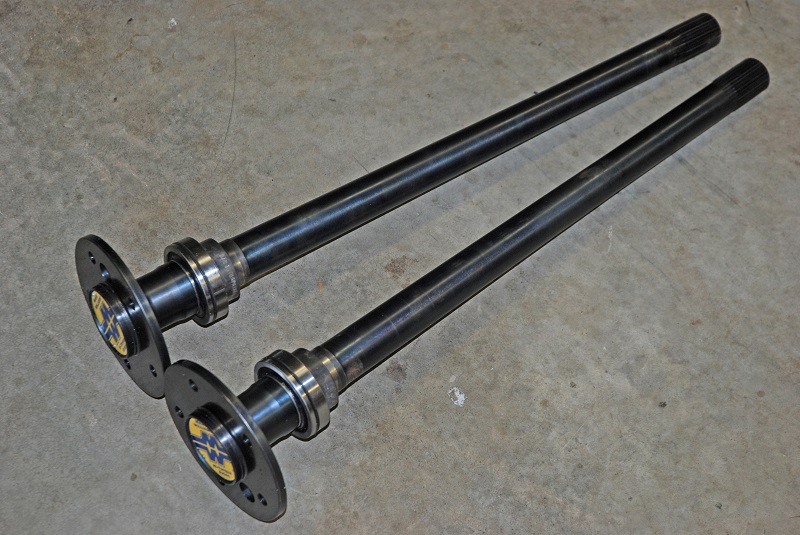
(Image/Wayne Scraba)
Adding big power to your car regularly comes with consequences.
Hardware that normally doesn’t flinch is suddenly hard pressed to keep up with the demand. Add big, sticky tires and before you know it—unanticipated carnage.
Rear axles are regularly taxed to the max under such circumstances.
If your car has a narrowed rear end or you’ve swapped in a rear end from another car, then it’s nearly impossible for even the best tech guys to figure out what the axle dimensions should be over the phone.
So before ordering your custom axles, it’s of paramount importance that measurements are taken correctly, and we’re going to help.
We’re going to show you exactly how to measure a rear housing for custom axles. It’s a pretty straightforward process. Once the dimensions are established, there’s no need to worry about axles being too long or too short.
Why custom axles? Because of the many possible spline combinations for spools and limited-slip differentials can complicate matters, as well as measuring the housing differently than a particular axle manufacturer, or running into an offset pinion.
Some vehicles incorporate an offset pinion. Some don’t. When a housing is set up with pinion offset, each axle will have a slightly different length.
Information the Axle Manufacturer Will Need to Make Proper-Fitting Custom Axles
1. Bare housing dimensions
- “X” = Housing, flange to flange
- “Y” = Driver-side housing, flange to pinion center
- “Z” = Passenger-side housing, flange to pinion center
2. Brake type
Many will be using a disc brake configuration, but for our example, the rear axle is set up with a standard small General Motors backing plate and a conventional 9½-inch small-car (Nova/Camaro/Chevelle) steel brake drum. These drums typically measure 3.200-inches wide to the outside of the axle register. Most manufacturers also require a brake drum thickness measurement. Take a reading at the register.
…
In the accompanying photos, we’ll measure a Strange Engineering S60 housing for axles. It’s easy. Just be sure to double-check your measurements.
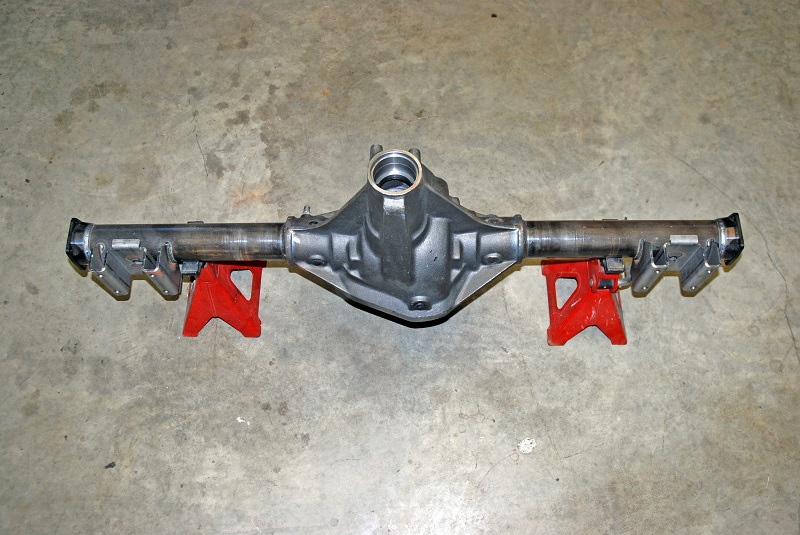
With the housing out of the car, we simply set it up on a set of axle stands, with the pinion rotated so that it faces up. Next, run a tape measure through the bare housing to get the dimension measurement. In our case, the housing measures 52.75 inches wide. (Image/Wayne Scraba)
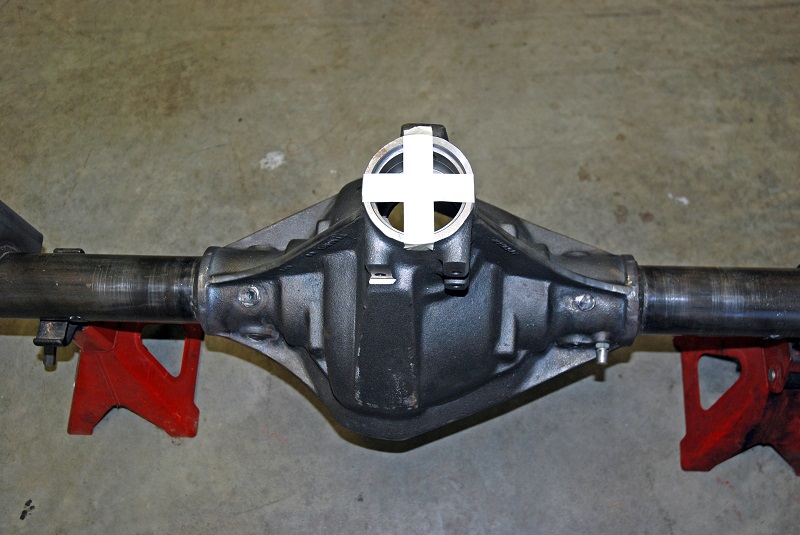
We found the centerline of the pinion and taped it over as shown here. (Image/Wayne Scraba)
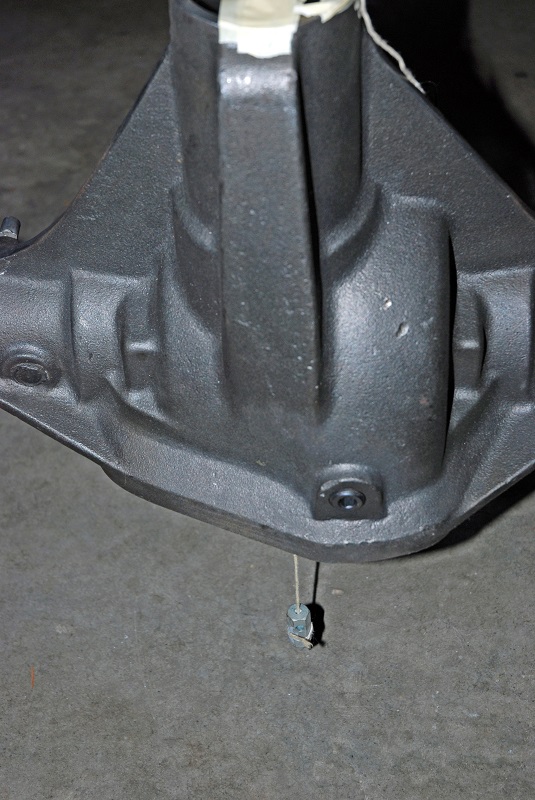
A plumb line was dropped from the pinion centerline out the back of the S60 housing. (Image/Wayne Scraba)
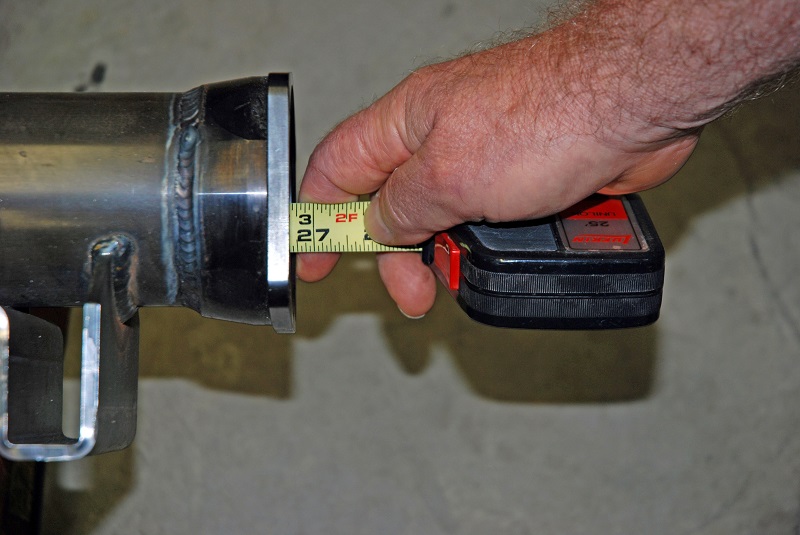
Next, we measured from the axle-housing flange back toward the plumb line. The passenger side measured 25.875-inches while the driver side checked out at 26.875-inches. What’s going on here? Even though the axle tubes welded to the center section are exactly the same width, there’s an inch difference in actual axles. That is the pinion offset. To double-check the numbers, add the pair of measurements together (25.875-inches + 26.875-inches = 52.750-inches). They should be the same as the axle flange-to-axle flange number. (Image/Wayne Scraba)
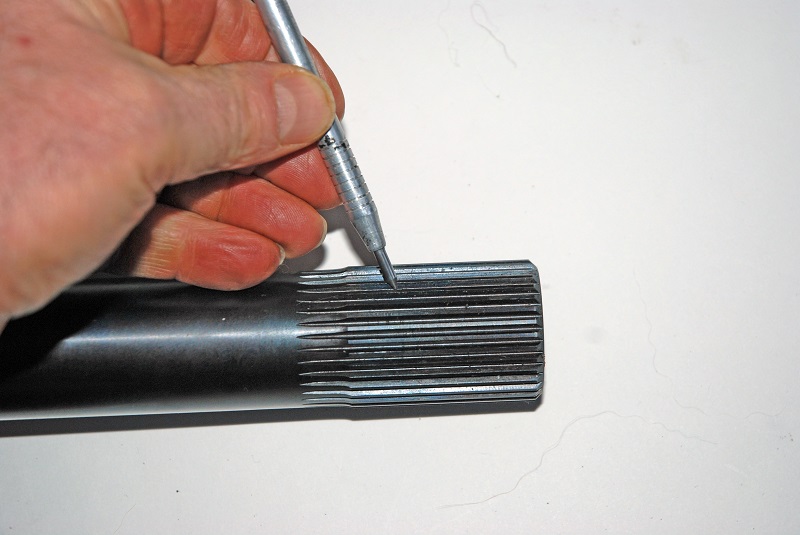
Spline count and spline configuration play an important role in ordering axles. Be sure to advise the tech folks with regard to spool or limited-slip spline count and manufacture (for example, some 35 spools have a different spline profile than a 35-spline limited slip). (Image/Wayne Scraba)
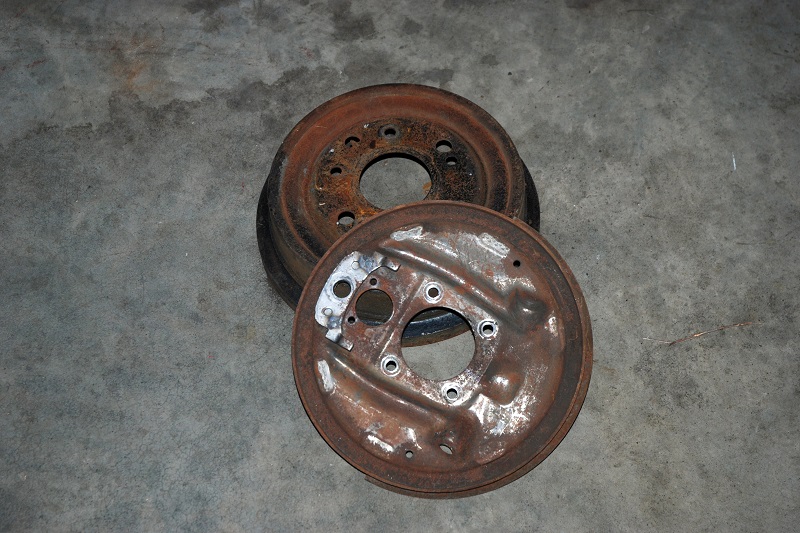
As pointed out in the text, the type of brake you plan on using has an effect upon the final axle measurement. While the width and thickness of the drum (to the register) is important, you’ll also need an allowance for the air gap between the brake drum and the backing plate. Typically this air gap differs from car to car, and from brand to brand. Your axle manufacturer can help you out with this dimension. (Image/Wayne Scraba)

How does this work for a 9 inchford rear axle. Plumb bob does`nt work like this on a ford 8.
Need axles for ford 9 asap.thanks
Hey Dillon, thanks for reading. You didn’t give many details on your exact needs, but Summit Racing’s got plenty of axle options for the Ford 9″. CLICK HERE to check ’em out.
Being an old carpenter and hobby machinist a little farther down the line I read that dimension to be 26 11/16 or 26.6875 light not allowing for string thickness. If the other side was measured similar, then would be .375 inch too long.
The measurement instructions included in this article should provide accurate results. Just be sure to pay close attention to the details and double check everything before ordering new axles. I ordered mine directly from Strange Engineering and couldn’t be more pleased with the whole process.
The Strange website has detailed instructions about taking the required measurements so I had all of that information ready before calling them. I was very impressed how knowledgeable the technician was that assisted me with placing my order.
My vehicle is a 1970 Mustang Mach 1 with the 9” differential and since I didn’t narrow the housing, verifying the correct axle lengths was a fairly simple process.
To eliminate any weak links in the axle assembly, I purchased the fully assembled Strange Pro Iron 3rd. member which includes their Nodular case with 3.250” axle bearings, an Eaton Detroit Locker 35 spline differential, 4.11:1 gears, Daytona pinion support with the optional billet yoke. The axles are heat treated 35 spline pieces and are made with their special alloy designed for street/strip abuse. They have the correct bearings and retainers pressed on for use with the OEM housing that has the “small” ends.
Setting up a Ford 9” differential isn’t too difficult but knowing that mine was assembled by the same technicians that also build full assemblies for Top Fuel and Nitro Funny Cars, gives peace of mind in knowing it was done right.